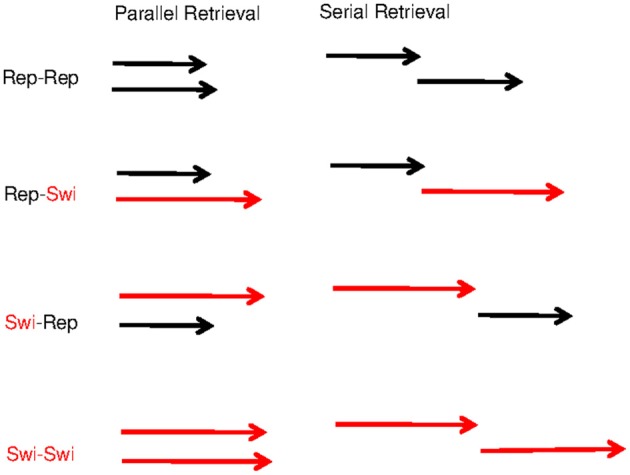Figure 5.

Schematic illustration of the item-repetition effects on the assumption of parallel retrieval (left) and on the assumption of serial retrieval (right). Each pair of arrows shows the duration of retrieving a pair of items. Black arrows represent retrieval of repeated items, and red arrows represent retrieval of not-repeated (i.e., switched) items, which on average takes longer. Response times are represented by the horizontal distance from the left-most arrow base (beginning of the trial) to the right-most arrow head (completion of both retrievals). The switch cost is additive with serial retrieval, but under-additive (i.e., the repetition benefit is over-additive) with parallel retrieval.
